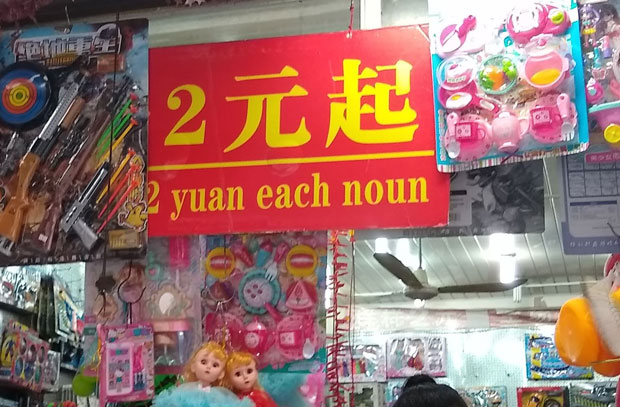I’m reviving my signs series to bring you this gem from my recent trip to China.
I’m pretty sure the sign means that each item costs 2 yuan, or about 30 cents US. But it got me thinking about how writers and editors price our services.
Pricing by the noun sounds fun, but it wouldn’t be practical. Word-workers would favor “clarification was attempted by the writer” (two nouns) over “the writer attempted to clarify” (one noun). We’d argue with clients over whether phrases like “project charge code” constitute three nouns or one noun with two adjectives.
Some copywriters and proofreaders do charge by the word. So did Charles Dickens and contemporaries who published novels as serials. The length of Dickens’ novels illustrates the danger of this practice in today’s fast-paced environment.
Many editors and proofreaders charge by the page. Obviously this practice requires clients and contractors to agree on what is a page. No fair using high school cheats like large fonts and wide margins! Charging by the page works for web writing, though, because most web pages are short, and the variable length means that differences between shorter and longer pages tends to even out.
Many word-workers charge by the hour. I have clients who prefer to pay that way, usually because they are charging my time to their own client.
Given my druthers, I charge by the project. I give you a bid – based on our discussion of your needs and my review of the source material – and we agree on a firm price for the job. The price for training is based on the duration of the session plus travel time and expenses.
I like this no-surprises approach. You know up front how much you’re going to pay, and I know how much I’m going to earn. We don’t have to worry how much is a page or whether my hourly rate aligns with industry standards. All that matters is whether you think you’re getting good value for your money.
So, can I quote a job for you? I offer clear, effective communications at reasonable – and entirely predictable – prices. Contact me!


